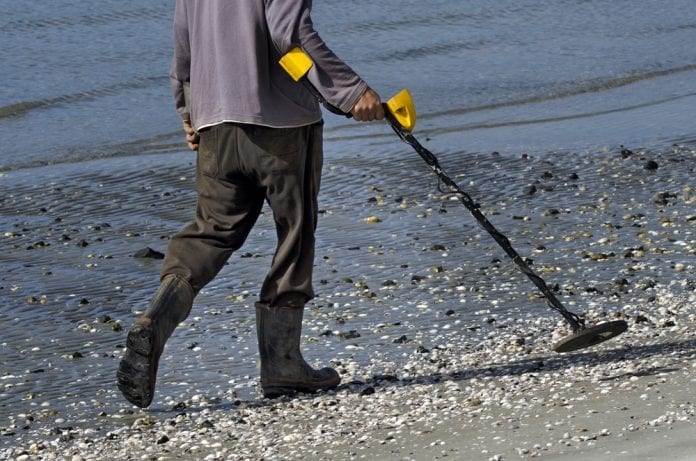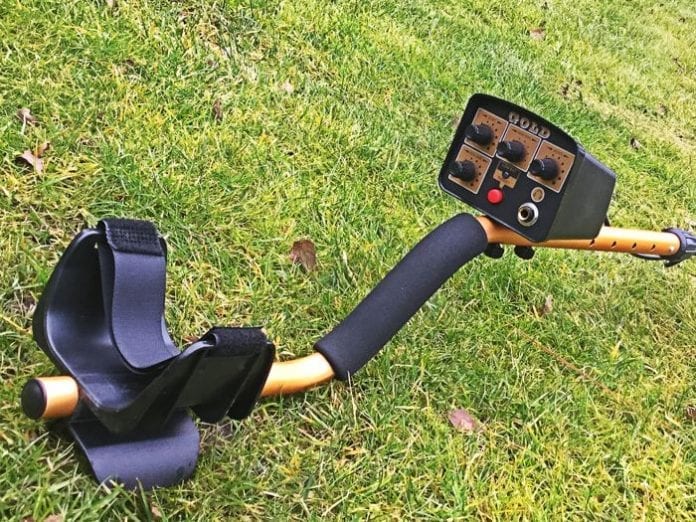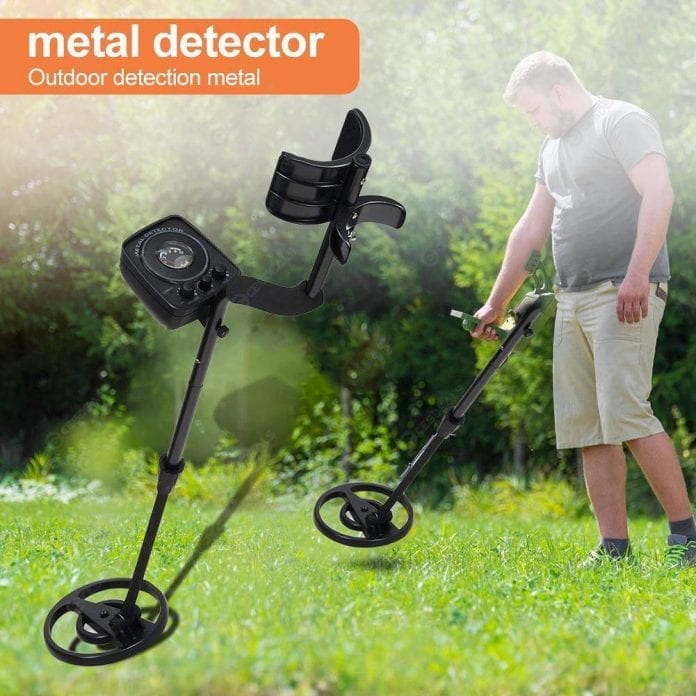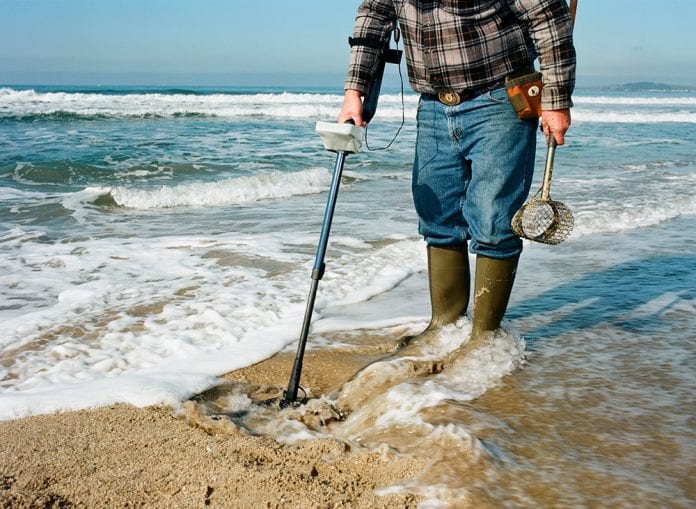The world is loaded with incredible activities and as you keep looking for more and more interesting things to do you will find the perfect adventure for yourself. Some of us are couch potatoes who’d rather watch a movie or read a book than making the effort of going out of the house. However, there’s a pack of the misfits among us, who seek to discover the unthinkable. For them, adventure is when at the end of the day their feet are dirty, hair messy and eyes have an unforgettable picture framed in them.
Recently the misfits have found a new way to keep themselves busy and at the same time in deep interaction with nature. Metal detecting is the new favorite outdoor hobby that people just can’t get enough of. Detectorists from all over the world find epic treasure buried by humans years or even centuries before we were even born. The greatest advantage that many people associate with this sui generis hobby is the chance of finding something precious. Not only this but many people around the world go detecting just for the sake of finding out more about the past and their ancestors.
To be involved in anything you have to have the prerequisite knowledge and this is the most appropriate and concise guide to hacking it at metal detecting.
What is a Metal Detector?

It is an electronic instrument used to detect the presence of any metals nearby. We mostly see them at airports, courthouses, and malls where you enter, security personnel check you for any illegal or harmful things you may be carrying. A sensor installed in the detector will indicate the presence of metal by either beeping or the movement of a needle on an indicator. The higher the needle goes or more repeatedly it beeps more is the concentration of the metal.
However, the ones found at these places are usually the ‘walk through’ versions and we will be discussing the mobile metal detectors. Such handheld detectors can be carried anywhere you want and used anywhere you like. A mainstream metal detector of an oscillator that produces an alternating current which passes through a coil producing an alternating magnetic field. If an electrically conductive material is found near the coil then eddy currents will be induced in that metal itself producing a magnetic field of its own. Historically they’ve been used for mineral prospecting and other industrial applications.
History of Metal Detectors

The birth of this interesting device has a rather interesting story behind it. In 1881, Alexander Graham Bell invented the first-ever Metal Detector which he called an induction balance. When President James Garfield lay dying of an assassin’s bullet, Bell hurriedly invented a crude metal detector to find the fatal bullet but unfortunately, this was an unsuccessful attempt.
Finally, in 1925, Gerard Fischer invented the first portable metal detector which started selling out in the market in 1931. They were then used for multiple things including geophysical prospecting, archaeology, treasure hunting and detect foreign bodies in food as well as in the construction industry to detect steel reinforcing bars in concrete and pipes plus wires buried in walls or floors. Their uses have been diversified depending on the users of the product.
Essential Glossary for Detectorists
The idea of making a fortune is very tempting but if you dive into this hobby without good research you might just be wasting a whole lot of time and money. Here are some of the most important terms that you need to be acquainted with.

-
Metal Discrimination
Metal discrimination offers the likelihood to decide the sorts of metals which are covered under the ground. There is a controller on the radio wire or gadget, which can be balanced on a particular kind of metal like gold, silver, iron, or aluminum. The detector sifts through all materials which are not proposed to be distinguished. This element forestalls the fortune tracker, who is looking for valuable metals, from futile burrowing. A few radio wires can separate among ferrous and nonferrous metals, different reception apparatuses can decide the careful sort of it.
-
Ground Balance
The natural composition of soil contains traces of metals like iron. This hinders the real search for valuable metals. The purpose of Ground Balance is to allow your metal detector to ignore these minimal minerals and focus on the real target. There are different variations of ground balance setting on different metal detectors.
-
Target Identification
This allows the metal detector to be more specific while choosing its targets. It can distinguish between a nickel, quarter, dime, silver jewelry or the probability of gold. As a result, it will give out a high-pitched tone on valuable items and vice versa.
-
Operating Frequency
Frequency scanners can work better in-depth as compared to the high-frequency ones that are better suited to find smaller objects but don’t go deep into the ground to find any relics.
-
Sensitivity
It is simply the ability to detect metals from afar. But that does not necessarily mean that higher sensitivity is better because it gives static and a lot of distortion. So you may have to set it according to the area you are in. Usually, the manufacturer’s recommendation on the device is perfect.

-
Search Depth
It is the depth to which your metal detector can detect. This depends upon the frequency and the coil of your detector. A lower frequency can detect deeper and larger coils can also search deeper.
Additional Tools and Accessories for a Detectorist
You must have high expectations from a metal detector but it’s not a one-man show.
Pin pointers
Pin pointers do exactly what their name suggests, while your metal detector highlights the vicinity in which a valuable item may be present, the pin pointer identifies the target.
Diggers
Strong diggers can help you go deep in the ground and are essential for digging out your finds.
Headphones

Many people believe that by looking at the LCD indicator you can find the valuable items, but the proper way to identify the real target is to listen to the audio signals. The visual target indicators are just an aid for the headphones, the primary player is the headphones.
In addition to these, you should have a pouch or bag to carry some other belongings or things you might be needing throughout the adventure.
For beginners, metal detecting is a little confusing because you can’t just go out in your backyard and expect to find valuable items. There are some specific places and seasons in which your chances of finding a historical relic or precious stone are the highest. Usually, the best times to go for detecting is when the rainwater has recently washed off from the mountains or an unfortunate drought has dried up areas that were undiscovered earlier because of water.
Similarly, there are certain locations where you have a higher chance of finding something interesting. The most historically rich place, a Battle Field is great for finding historical relics. Beaches are also good because of the constant wave movement which may be bringing in a lot of valuable items. Sometimes even deserted towns and Churches are remarkable for the search as you never know what might’ve been left behind.
For you to begin with this adventurous hobby we have compiled everything you need to know if you’d like to find out more about metal detecting visit metaldetectordirect.com to read more in-depth guides.
Good luck!









